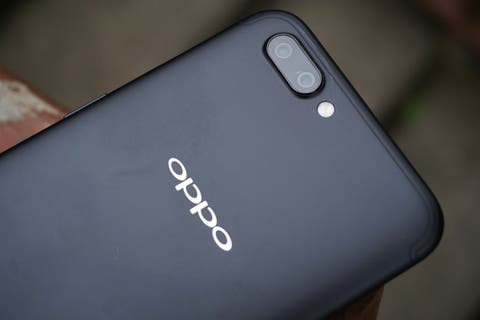I wasn’t able to attend the launch of the all new Oppo R11, but thankfully the Oppo Team have sent a device to me to take a look at.
Earlier this month, Oppo launched their latest smartphone in China, and their first phone to feature dual rear cameras. The Oppo R11 is its name and shooting photos is the game, but how well can it do that? Well, that’s up to me to find out in my full review, but for now here are my first impressions of the phone.
The Oppo R11 have been getting a lot of press recently, not only for the dual cameras and slender metal body but because it happens to be very close in design and specification to the OnePlus 5. I’ll be able to give you a better side by side look of both of these BBK phones in the coming days, but for now, let’s concentrate on the R11.
From a design and build point of view the Oppo R11 ticks all the right boxes. It’s a very slender phone made from alloy in a unibody style. This creates a phone that looks as good as any flagship on the market today and feels as though it’s going to last the course too.
The dual cameras are located on the top left corner of the phone much like an iPhone 7 Plus, and just like the iPhone each sensor can be activated individually to offer a 2x optical zoom in addition to the 10x digital zoom. The main sensor is a 20-megapixel shooter with F1.7 aperture that promises to let in plenty of light while the secondary camera is a 16-megapixel sensor.
Flip the phone over we find a 5.5-inch 1920 x 1090 AMOLED display with slim bezels (hmmm where did we see those specs before?). Above that is a front 20-megapixel camera, and below we have a fingerprint scanner and your standard Android navigation controls on either side. For those of you wondering, the answer is No, the home button isn’t an actual physical button. Lay over the top of these components is a 2.5D Corning Gorilla Glass 5 panel with pre-applied screen guard.
All that’s left is the sides of the phone. The bottom edge gives us a micro USB plug that uses Oppo’s VOOC fast charging feature, to the right of that is a 3.5mm headphone jack and the left is a speaker. A power button is located on the right with volume controls found on the left side of the slim alloy body.
Under the hood, the Oppo R11 comes with 4GB RAM, a Snapdragon 660 chipset, dual SIM support (or single SIM and SD card), 64GB memory, 3000mAh battery plus everything that I’ve mentioned above.
I only received the Oppo R11 yesterday so I have had very little time with the phone and these are very early impressions but, this is what I have found so far.
Battery life is below what I was expecting and not at all like what I have experienced on my previous long term review phone (the excellent Vivo V5 Plus). To be fair the battery has only had one cycle and I do expect battery life to increase a little, however today with medium usage (8am – 4:30pm) I was forced to charge the phone to ensure it wouldn’t run flat. Sure the phone does have a fast VOOC charger, but I’d much prefer a longer battery life.
The R11 is running an official International aka Singapore, version of Oppo’s ColorOS v3.1 so I’ve had no issues with Google service as it all came preloaded and worked off the bat. Google Assistant works really well and the OS has a ton of useful features, in fact the new ColorOS system seems to share a few features with the latest version of Vivo’s Funtouch ROM.
There are a few bugs though. When recording video there seems to be a conflict with Google search and an error message appears “camera is recording, so Google unable to record temporarily”. Click “Ok” and the error just keeps popping back…
I’m hoping that an early update might address some of these teething problems as the actual hardware of the phone is all very promising.
Keep your eyes peeled for my OnePlus 5 first impressions coming very soon, plus my full review of the Oppo R11 and the Vivo V5 Plus.
